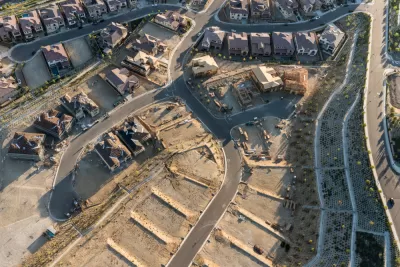Walla Walla's 2018 zoning reforms included adaptive reuse, reduced parking requirements, and more relaxed rules for accessory dwelling units.

When Walla Walla, Washington reformed its zoning code in 2018, the changes didn't get much attention, writes Stephen Fesler. Yet the city of 33,000 has quietly eliminated single-family zoning, among other changes such as "procedural processes, subdivision standards, street connectivity requirements, and adaptive reuse of non-residential buildings in residential zones," as well as "a wider variety of allowed uses in the lower density zone, a reduction of residential parking requirements, and more flexible accessory dwelling unit regulations."
"Generally speaking, the Neighborhood Residential zone allows for higher lot coverage, smaller setbacks, reduced parking requirements, and no minimum lot sizes, widths, or depths," amounting to standards that "allow for much more to be constructed on lots and legalize missing middle housing in areas where they were banned." The city's "approach with the Neighborhood Residential zone is particularly uncommon in Washington as it doesn’t have a defined density limit — something that most cities tend to use in lower-density residential zones. Instead, the zoning code simply relies upon other development standards like landscaping, height, setbacks, parking, and lot coverage to control how much can be built on a lot."
The simplicity and flexibility of this regulatory framework, Fesler says, is "something that many cities might do well to follow."
FULL STORY: Walla Walla: A Washington City Without Single-Family-Only Zoning

Alabama: Trump Terminates Settlements for Black Communities Harmed By Raw Sewage
Trump deemed the landmark civil rights agreement “illegal DEI and environmental justice policy.”

Planetizen Federal Action Tracker
A weekly monitor of how Trump’s orders and actions are impacting planners and planning in America.

The 120 Year Old Tiny Home Villages That Sheltered San Francisco’s Earthquake Refugees
More than a century ago, San Francisco mobilized to house thousands of residents displaced by the 1906 earthquake. Could their strategy offer a model for the present?

In Both Crashes and Crime, Public Transportation is Far Safer than Driving
Contrary to popular assumptions, public transportation has far lower crash and crime rates than automobile travel. For safer communities, improve and encourage transit travel.

Report: Zoning Reforms Should Complement Nashville’s Ambitious Transit Plan
Without reform, restrictive zoning codes will limit the impact of the city’s planned transit expansion and could exclude some of the residents who depend on transit the most.

Judge Orders Release of Frozen IRA, IIJA Funding
The decision is a victory for environmental groups who charged that freezing funds for critical infrastructure and disaster response programs caused “real and irreparable harm” to communities.
Urban Design for Planners 1: Software Tools
This six-course series explores essential urban design concepts using open source software and equips planners with the tools they need to participate fully in the urban design process.
Planning for Universal Design
Learn the tools for implementing Universal Design in planning regulations.
Clanton & Associates, Inc.
Jessamine County Fiscal Court
Institute for Housing and Urban Development Studies (IHS)
City of Grandview
Harvard GSD Executive Education
Toledo-Lucas County Plan Commissions
Salt Lake City
NYU Wagner Graduate School of Public Service





























